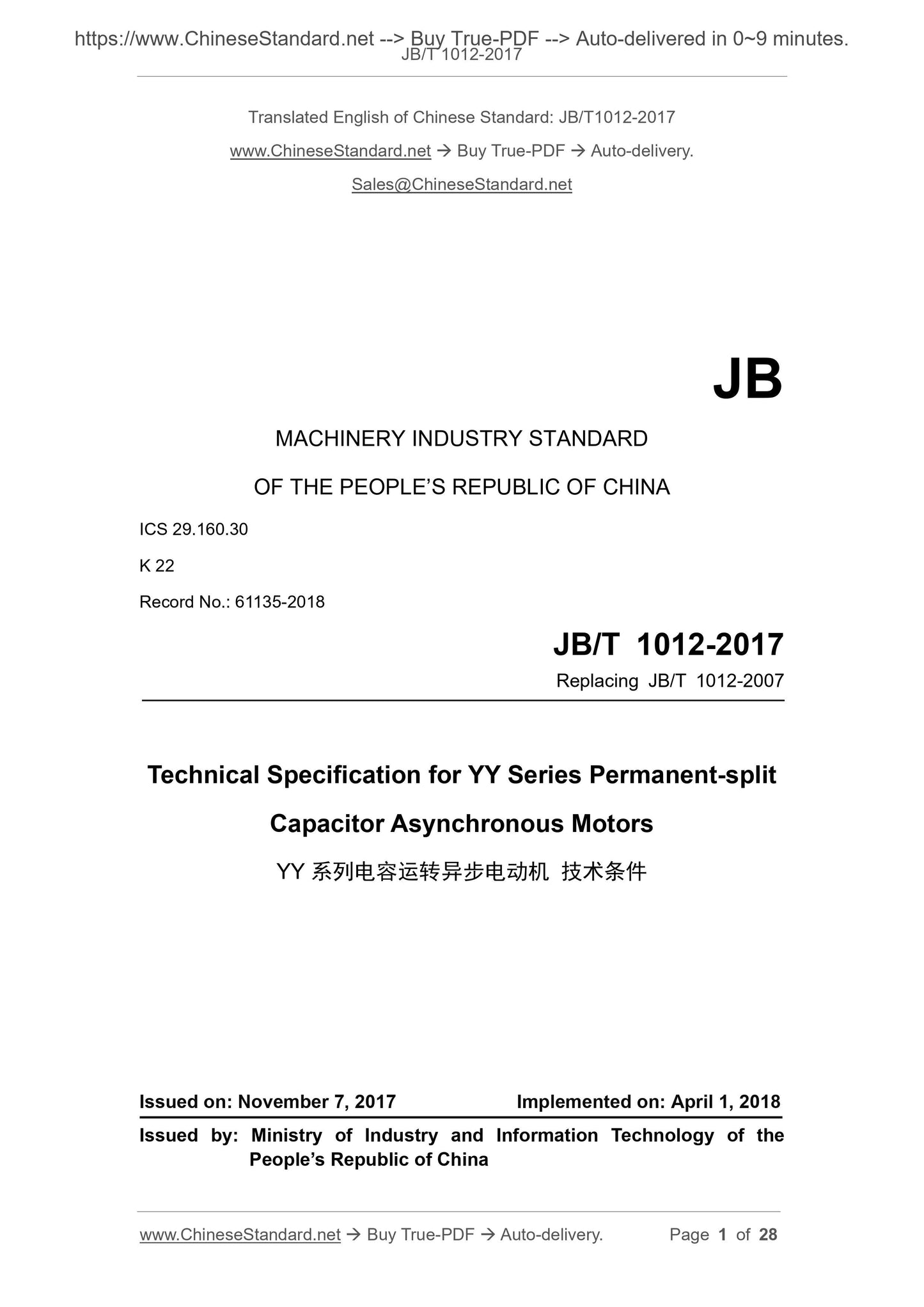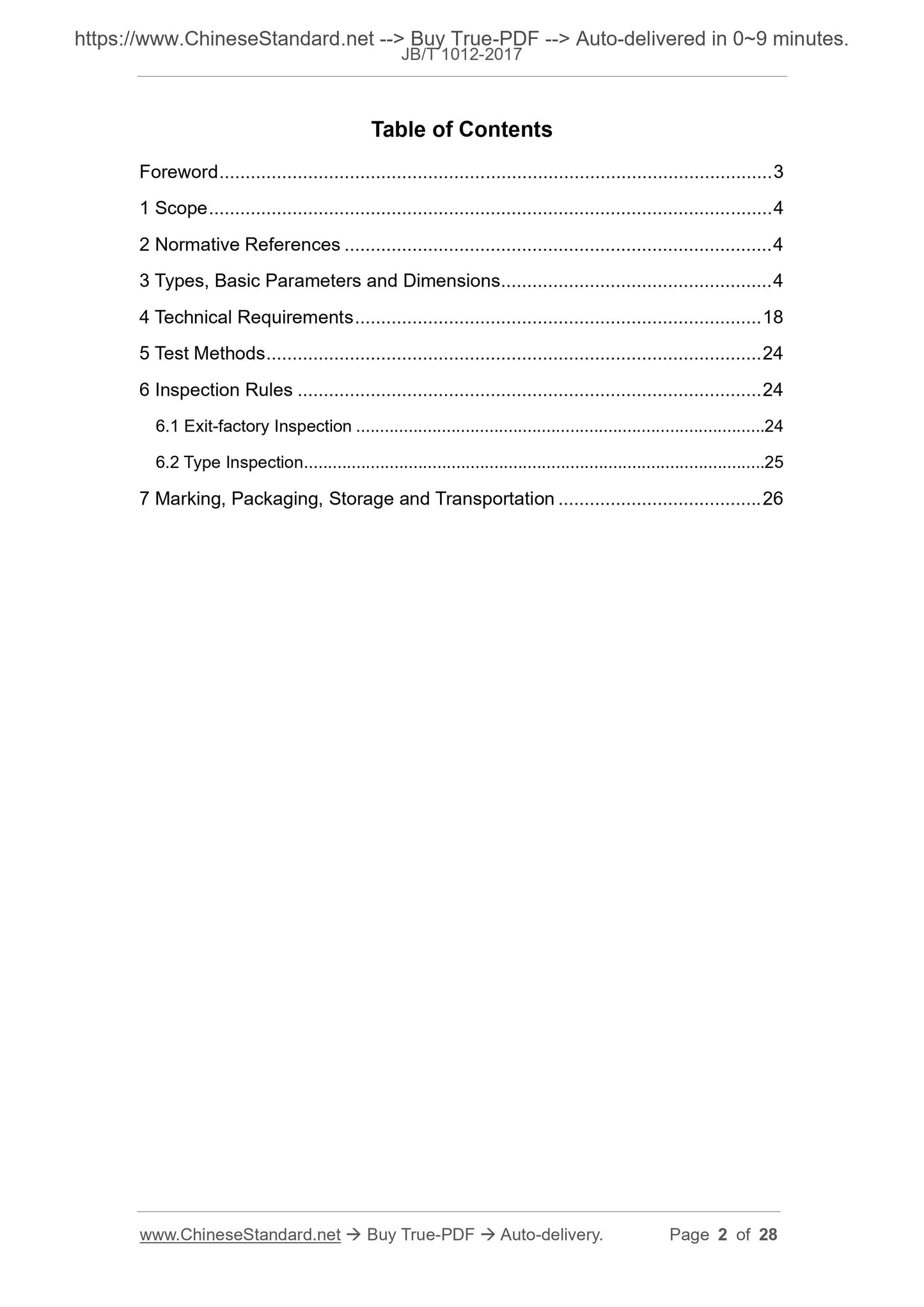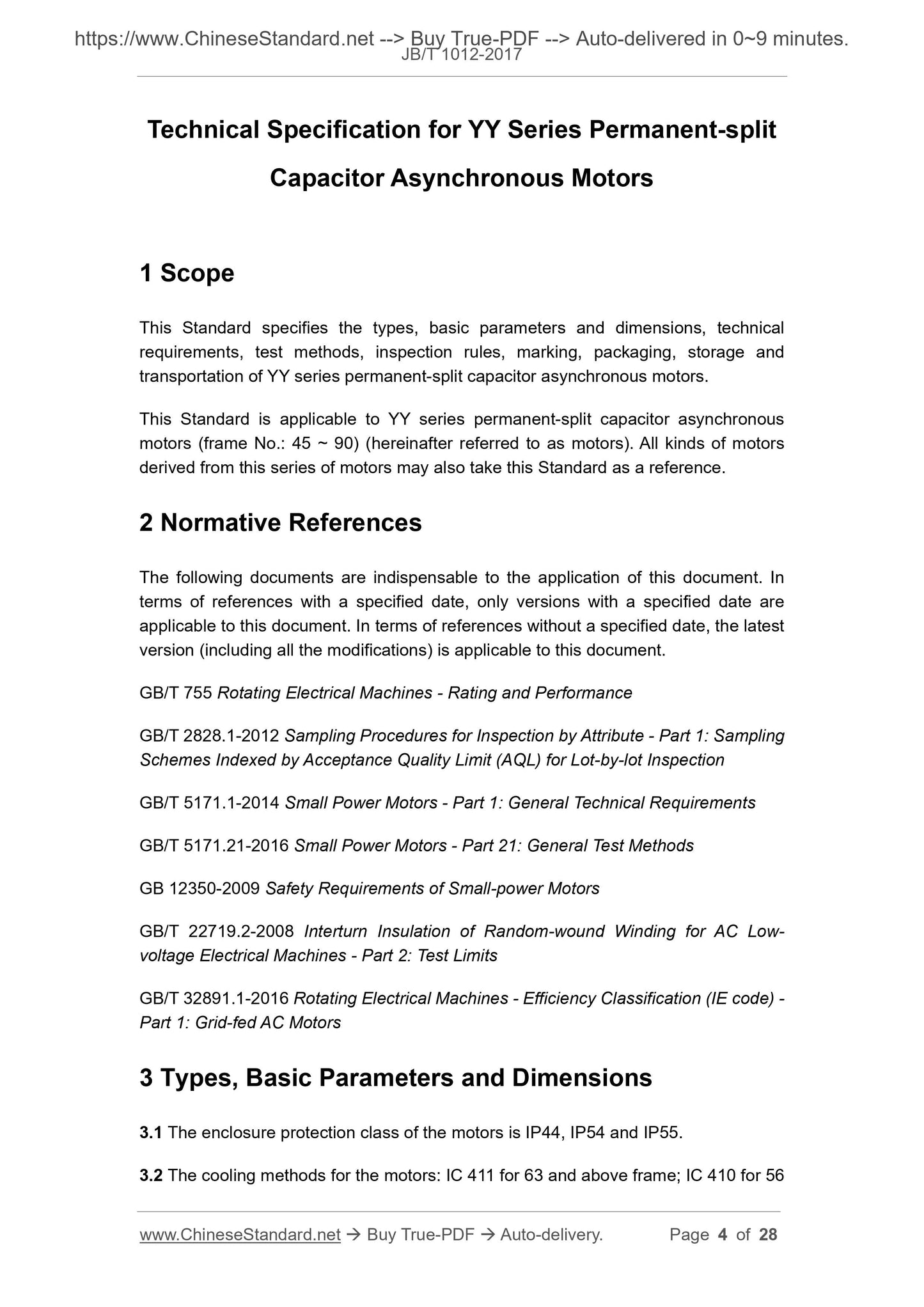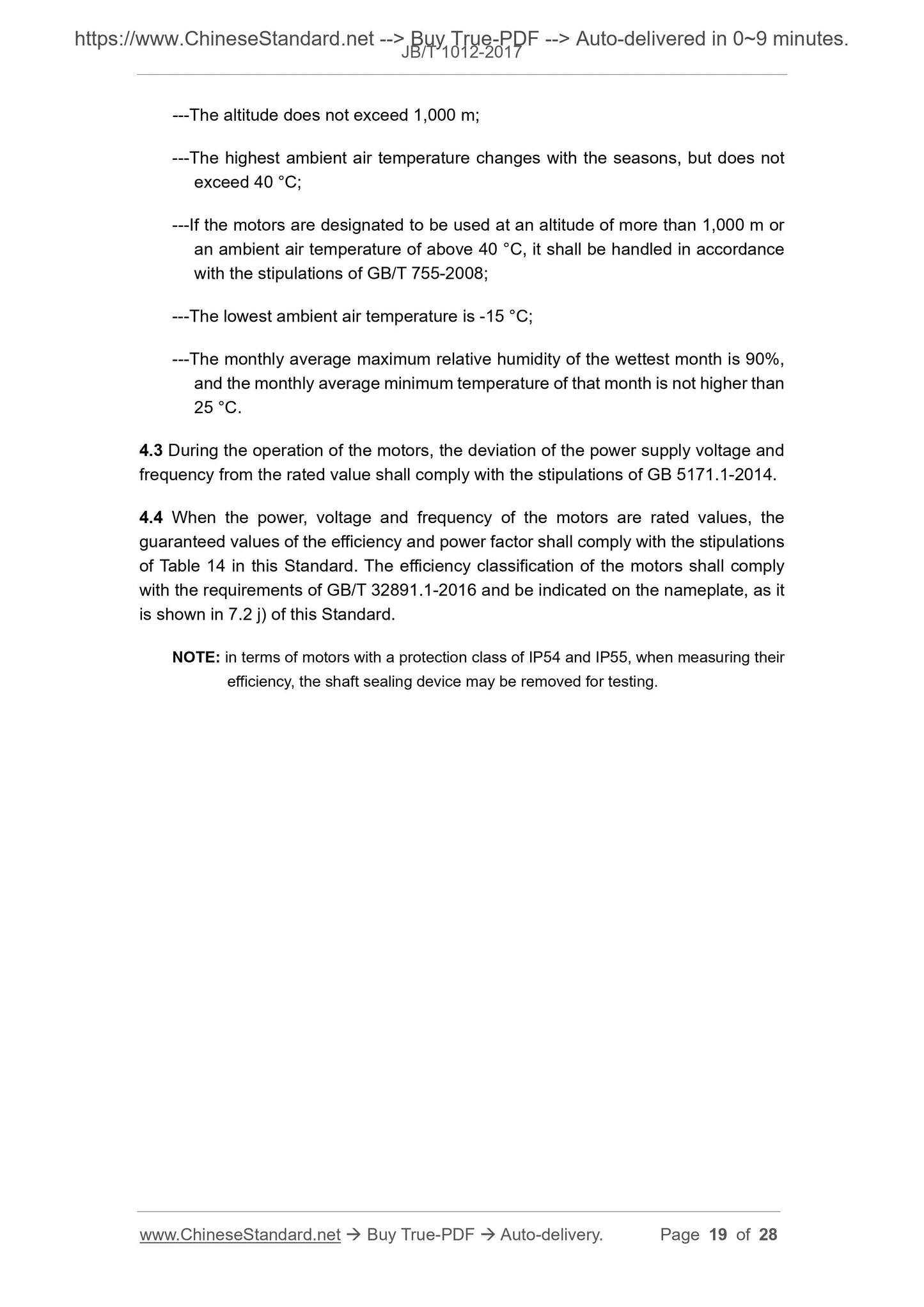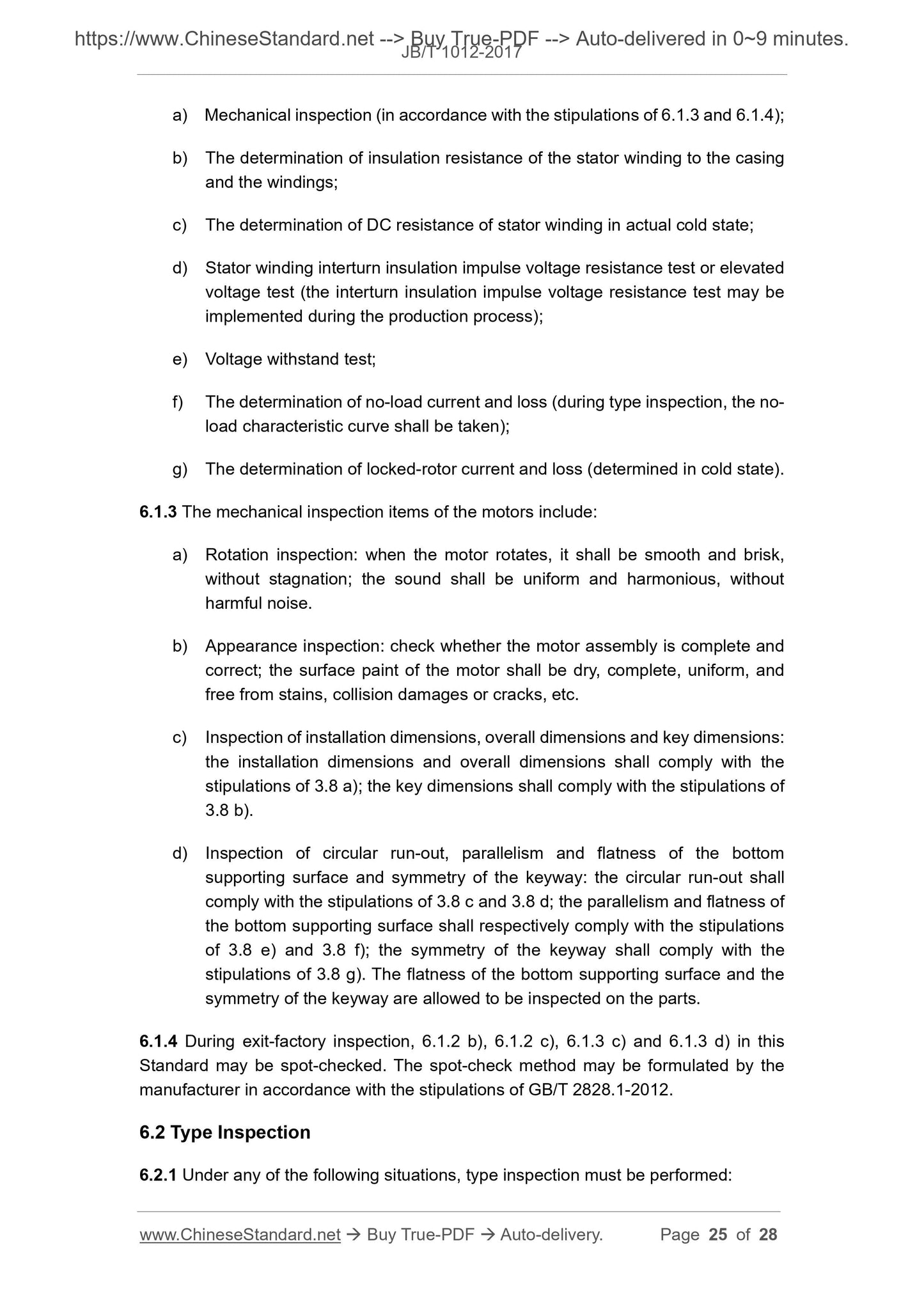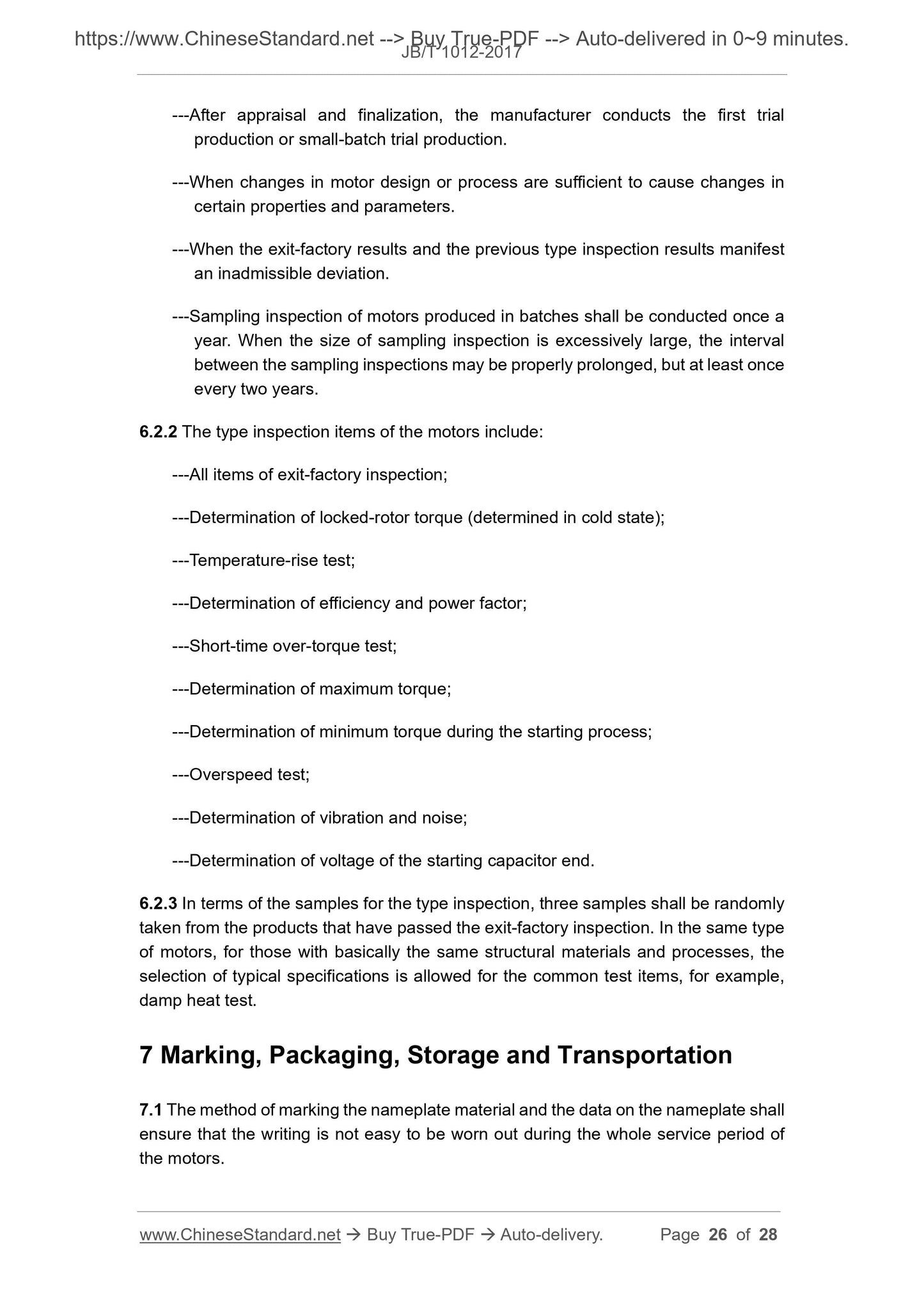1
/
of
6
www.ChineseStandard.us -- Field Test Asia Pte. Ltd.
JB/T 1012-2017 English PDF (JB/T1012-2017)
JB/T 1012-2017 English PDF (JB/T1012-2017)
Regular price
$310.00
Regular price
Sale price
$310.00
Unit price
/
per
Shipping calculated at checkout.
Couldn't load pickup availability
JB/T 1012-2017: Technical Specification for YY Series Permanent-split Capacitor Asynchronous Motors
Delivery: 9 seconds. Download (and Email) true-PDF + Invoice.Get Quotation: Click JB/T 1012-2017 (Self-service in 1-minute)
Newer / historical versions: JB/T 1012-2017
Preview True-PDF
Scope
This Standard specifies the types, basic parameters and dimensions, technicalrequirements, test methods, inspection rules, marking, packaging, storage and
transportation of YY series permanent-split capacitor asynchronous motors.
This Standard is applicable to YY series permanent-split capacitor asynchronous
motors (frame No.: 45 ~ 90) (hereinafter referred to as motors). All kinds of motors
derived from this series of motors may also take this Standard as a reference.
Basic Data
| Standard ID | JB/T 1012-2017 (JB/T1012-2017) |
| Description (Translated English) | Technical Specification for YY Series Permanent-split Capacitor Asynchronous Motors |
| Sector / Industry | Mechanical and Machinery Industry Standard (Recommended) |
| Classification of Chinese Standard | K22 |
| Word Count Estimation | 17,145 |
| Date of Issue | 2017-11-07 |
| Date of Implementation | 2018-04-01 |
| Older Standard (superseded by this standard) | JB/T 1012-2007 |
| Regulation (derived from) | Ministry of Industry and Information Technology Bulletin 2017 No. 48 |
| Issuing agency(ies) | Ministry of Industry and Information Technology |
| Summary | This standard specifies the type, basic parameters, dimensions, requirements, test methods, inspection rules, and marking, packaging, and transportation of YY series capacitor-operated asynchronous motors. |
Share
